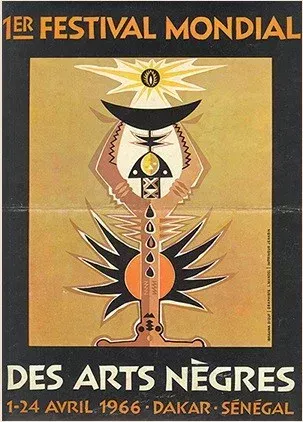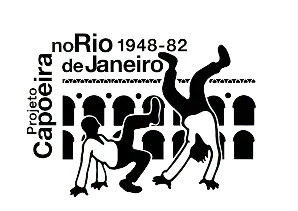By Julio Cesar de Tavares.
Who would have been able to imagine, a century ago, that today, capoeira would be out and about in the world and bringing out more and more capoeiristas to the artful game of rogues?
No doubt, this was not accomplished without suffering, effort and dedication. Nor did it happen without humiliation, frustration, persecution and exclusion. Capoeira, by its original definition, was, is and will continue to be the art of disguise (ginga/mandinga), whether Capoeira Regional, Capoeira Angola, Contemporary Capoeira or an independent style. It is deeply shaped by rebellion (hidden resistance/resilience) against the injustices of the State regarding the daily lives of subaltern individuals and subordinated social groups. This is, like it or not, one of the most intriguing aspects, in any of its styles or denominations – this permanent libertarian communication, demonstrated by the interest of individuals empowered by a certain rebellious condition when they let themselves be captivated by capoeira. Emerging through permanent recreations and projections by the Afro-descendant population, there is an endless appeal to creativity in capoeira beyond the very conditions that created it.
In spite of being concentrated, until the beginning of the 20th century, in the most subaltern groups of the population in large urban centres, such as in Salvador, Rio de Janeiro and Recife, and in addition to being classified by hostile and defamatory categories, loaded with negative associations, capoeira always managed to circulate among other social strata and attract individuals from other ethnic-racial origins. For this very reason, it has always shown enormous flexibility in overcoming racial and social boundaries. And, surprisingly, it entered environments totally characteristic of the plantation’s big house (casa grande), while preserving the characteristics, the main features, the language, the way, the rhythm, the nostalgia and sorrow typical of the ancestral tradition present in black African music throughout its diaspora. This paradoxical process allowed capoeira to recreate itself and adapt to the demands of a world in constant transformation, which, every day, is founded again in what we call the contemporary ways.
Today, in 2020, capoeira is not only anchored, increasingly refined, careful and meticulously centred in its knowledge of technical, physiological, musical and artisanal research, but also supported by the various academic fields of History, Anthropology, Ethnomusicology, Performance Arts, Literature, Physical Education, etc. What most calls our attention is the speed with which all this happened – in little more than half a century, if we consider 1966 as the landmark of capoeira expansion.

Yes, Mestre Pastinha was present at the First World Festival of Black Arts, in Dakar, Senegal, and hence the song by Caetano Veloso that goes: “Pastinha has already been to Africa, Pastinha has already been to Africa, to show capoeira from Brazil (…)”. And there he presented, on the soil of the mother continent, the matrix of an African movement celebrated in the swing (ginga) of the diaspora, and the most relevant transnational fact, which was the insertion of capoeira into the world, in the context of that first great pan-African and Afrodiasporic encounter. The First World Festival of Black Arts in Dakar, in 1966, with the presence of Mestre Pastinha, voiced to the world the dynamic asymmetry, the rhythmic movement driven by the beat (levada) of the berimbau, in multiple synchronicity with the infinite combination of movements on the ground, in standing, in flight and in addition, with playfulness, the game, and the permanent joy and smile of enchantment.
From then on, capoeira won over the world. It managed to spread its phenomenal development at an exponential speed, which until then seemed impossible to imagine. We witness that everything had happened in a smooth and cautious way, cannibalized by the world and exemplified as a symptom of the emerging transnationalization of Afro-Brazilian culture.
After its presentation in Africa, capoeira expanded throughout the United States and Europe, still in the late 1960s. Until Katherine Dunham, the beloved student of anthropologist M. Herskovits and considered by Levi-Strauss as the founder of Dance Anthropology, with her ethnographic examination of the religious dances of Vodou in Haiti, and the gestures and movements of Santeria in Cuba, interfered with the overall direction of Afro-Brazilian culture. And it did so, transcending the choreographic dimension of capoeira, by combining the capoeirista’s body with diasporic politics of recognition and visibility. Dunham accomplished this through a professional gesture when hiring capoeira practitioners for her dance company and also enroling as auxiliary teacher for her classes at Saint Louis University Eusébio Lobo, known as Mestre Pavão (now a professor at Unicamp). Her dance group, the Katherine Dunham Company, was developed and composed entirely by blacks specialized in this type of dance.
It is necessary to point out here that Katherine, beyond her professional invitation to the capoeirista and capoeira-teacher Eusébio, also accomplished a political gesture of incredible importance for Brazil. I’m talking about the public denunciation of racism which she did, in 1950, well before hiring Eusébio which only happened in the 60s. When travelling in Brazil she was prevented from taking a room at the Hotel Esplanada in São Paulo, which did not accept black guests. Conscious of her political role and her ethno-racial origins, the intended humiliation of the Tupiniquim (=Brazilian) racism did not manage to silence her because this episode became a national scandal, shaking the political, judicial and intelectual spheres. Gilberto Freyre, Afonso Arinos and other MPs initiated a great mobilisation to demonstrate the need to penalise cases like hers. In fact, Afonso Arinos managed to approve the first anti-racist law in Brazil which bears his name: the Afonso Arinos Law of 1951. Gilberto Freyre’s involvement in the case shook the political and cultural sectors and the project of the MP Afonso Arinos was approved by a large majority. Today, the Afonso Arinos law of 1951 has been revoked [translator’s note: and replaced by another legislation]. Hence Katherine Dunham made an involuntary contribution to the approval of the first law that attempted to punish racial discrimination in Brazil.
Returning to capoeira, how could we imagine capoeira would be registered as Brazilian intangible heritage in 2009? It was even less likely to predict the circulation of the category “intangible heritage” which is currently used in the field of anthropological and historical studies on Heritage. In the early 1980s, this was as unfeasible to imagine as the fall of the Berlin wall (1989). Today, solidly present in more than 150 countries (in some, even, as an integral part of official education policies), capoeira is booming, as did jazz, jiu-jitsu, judo, ballet and classical music, examples of great performances, both musical and corporal, which reached transnational expression.
Imagine that, at this very moment as we read through these words and lines, tens of thousands of the more than 200,000 capoeira practitioners all over the world, are singing a chula (a type of capoeira song), playing an instrument and playing a game in the capoeira circle (roda)! Can you still imagine that this game, with several centuries of history, whose players communicate through Brazilian Portuguese in this art form, won over the world, won over fans and expanded its practice without any interference from the Brazilian state for this to happen? The strength of the capoeira diaspora is witnessed by our diplomats and recognized by the Ministry of Foreign Affairs, which reiterates the omnipresence, brilliance and vitality of this art form/game/fight and its important role in the dissemination of the Brazilian vernacular and body language.
We found that, in fact, capoeira is an intersectional performance/fight/game that is built as an art movement amidst a constellation of many other art forms. Certainly, it is in this complex web of connections that characterizes it – a body in motion, the music, song, poetry of its litanies (ladainhas, another type of capoeira song) and the craftsmanship of its instruments – that one finds the great power, magic, charm and mystery of capoeira. And so, magnetizing hundreds of thousands of practitioners, it multiplied across Europe, all states of the United States, the countries of South America, several countries in the Middle East, Asia and Africa, in addition to the Caribbean countries.
It is an art that experiences intersectionality. Capoeira is expressed and thematised in many other art forms such as literature (for example, in Jorge Amado’s work), and has a growing presence in cinema, soap operas, theatre, dance, visual arts and, more recently, even in video games. It has achieved full recognition of the extensive performative strength of Afro-Brazilian culture and of all the transnational effort of the capoeirista community.
It is accepted that capoeira provides an effective contribution to the development of multiple cognitive skills. This Brazilian heritage should therefore be integrated into school education, from childhood to university, as a traditional expression of the Afro-Brazilian practice of resistance and resilience, of extreme motor coordination, which integrates in harmony and asymmetry, an enduring combination of multiple intelligences. Incorporated into the cultural repertoire of national pedagogy, it becomes an updated post-colonial representation of resistance to domination and cognitive injustices. This fantastic expression of concealment becomes a true transnational epidemic, which enchants men and women, children and adolescents, adults and the elderly all around the world. At the same time, it promotes a permanent reinvention of movement, technical investigation and aesthetic sensibility in individual bodies that carry both a unique and global body memory.
There is one aspect that needs to be pointed out that is of great relevance in this process of expanding capoeira’s borders. Yes, we can say that capoeira expanded the frontiers of national culture because it broke the provincial view that was tied to the idea that Brazilianculture is framed by specific locations in Brazil in contrast to an external culture. Suddenly, capoeiristas believed that they could expand Brazil’s borders by taking a culture from deep inside to the outside world. In this process the culture from the inside was indeed taken to the outside world. And look! Capoeira and other cultures from within shared this invasion of the outside world, and puxada de rede, samba de roda, maracatu, maculelê, jongo, expanded all in conjunction with capoeira, in public demonstrations, belonging to a markedly Afro-Brazilian diasporic cultural network around the world.



